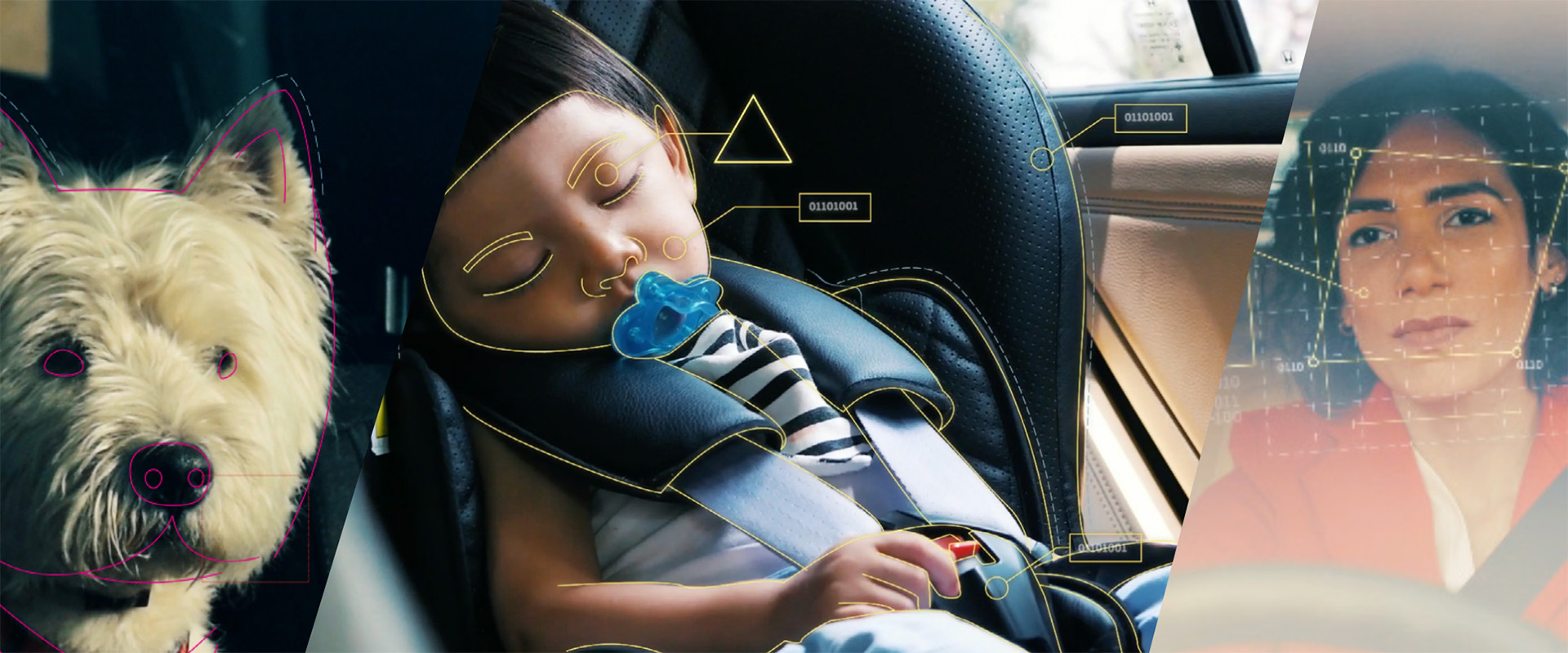EN


Car manufacturers at the leading edge of development are already requesting features for in-cabin sensing beyond driver monitoring. Over the next several years, we expect to see this technology deployed in vehicles on the road. From advanced safety to engaging mobility experiences that promote comfort, wellness and entertainment, Interior Sensing and in-cabin sensing systems will soon seamlessly be a part of our lives.
These are a few examples of how different everyday scenarios could be affected by the implementation of these technologies:
Youssef is commuting home from work. Throughout the journey, he is getting increasingly sleepy. His drowsiness levels are detected by the Interior Sensing system, which takes immediate action depending on his level of fatigue:
– Voice assistant empathetically suggests pulling over at the next exit for a break
– The system issues a haptic, auditory or visual alert
– The entertainment system plays upbeat music
– The temperature is lowered and ambient lighting in changed
– Autonomous driving safely pulls over the vehicle
The driver assist functions in Julia’s car are engaged. The Interior Sensing system detects that Julia is holding a mobile phone in her hand and identifies her physical distraction by calculating the frequency and duration her eyes are off the road. It also identifies her mental distraction by observing facial and vocal expressions that are indicative of cognitive load. Ultimately, the system draws the conclusion that Julia is not paying enough attention to the road ahead. It activates one or more of the following safety measures:
– Voice assistant offers to look something up, empathetically reminding Julia not to use her phone
– Sends a haptic, auditory or visual alert
– Decreases music volume
– Increases sensitivity of adaptive cruise control
– Engages self-driving mode
Tom is driving his daughter Emma to day care. Traffic is bad and he is now running late for work. Emma starts crying, so Tom tries to distract her to cheer her up. He is not paying attention to the road. The Interior Sensing system first identifies that there are multiple occupants in the car, and that one of the occupants is a child. It senses from the child’s face and voice that she is crying and detects that the adult in the car looks worried and is not paying attention to the road. The system takes the following actions:
– The infotainment system soothes the child by playing a lullaby or a favorite TV program
– Soothing voice assistant suggests pulling over to check on the child or offers an alternate route
Mia lets her semi-autonomous car drive while she takes a work call. She ends up having a heated argument with a co-worker and is extremely agitated. The car identifies the need to hand control to Mia but identifies her state of hyper-agitation through facial and vocal expression analysis. She is clearly not paying attention to the road, so the Interior Sensing system uses the data to inform decision-making:
– Based on the level of confidence in the driver’s state, the system decides not to hand control to the driver and pulls the car over to the side of the road
Lars is stuck in bad traffic. His calendar shows he is late for a meeting, and he keeps looking at his phone. A car cuts in front of him and Lars almost drives into it. He gets angry. Using the in-cabin cameras and microphone, the Interior Sensing systems identifies facial and vocal expressions of anger. It also detects Lars’s mental distraction by observing expressions that indicate cognitive load and detects distraction by calculating the frequency and duration his eyes are off the road. The system identifies this as an unsafe driving situation. To ensure driver safety, the vehicle intervenes:
– The Advanced Driver Assistance System (ADAS) slows down speed and engages the brakes
– The car recommends taking the next exit for a break from driving
– The virtual assistant guides, in a soothing voice, to take a deep breath
– The music player turns on the driver’s preferred relaxation playlist
Want to learn more about interior sensing? Download our eBook on Interior Sensing: The Next Frontier in Improving Road Safety and the Mobility Experience
